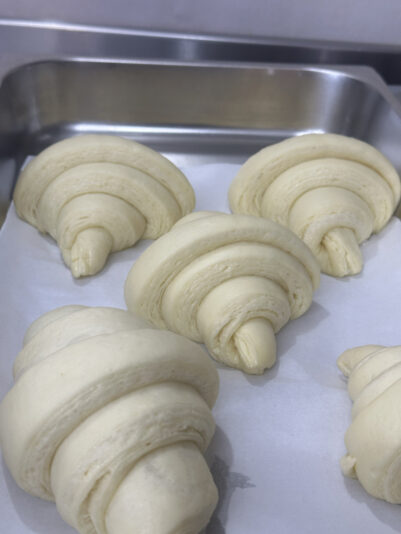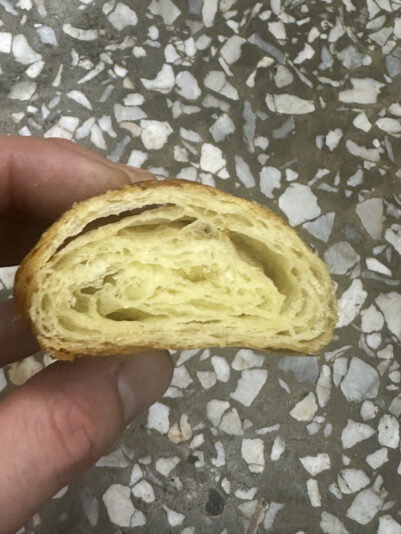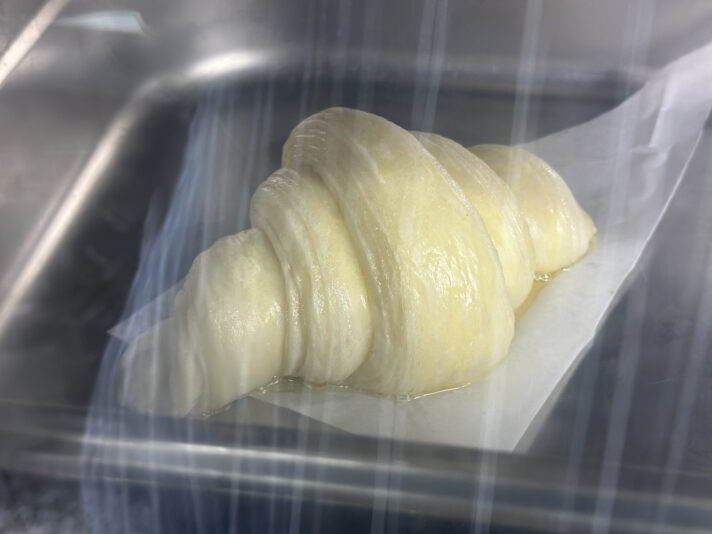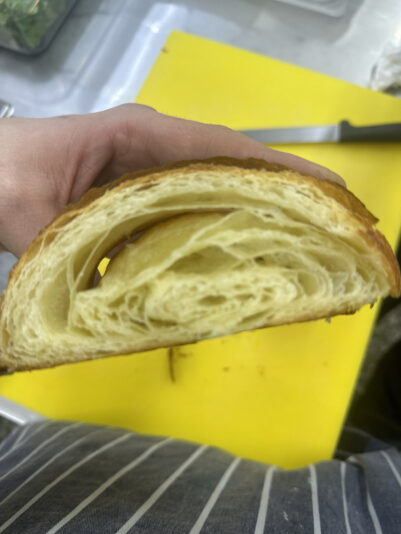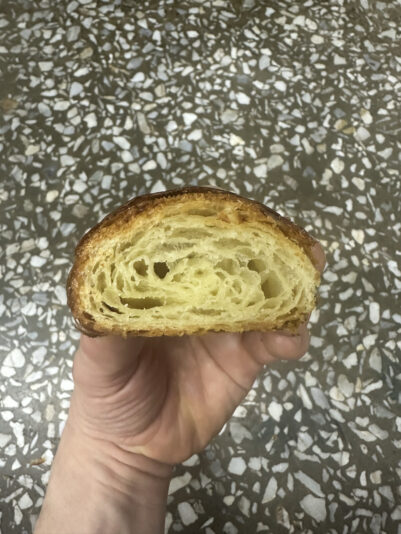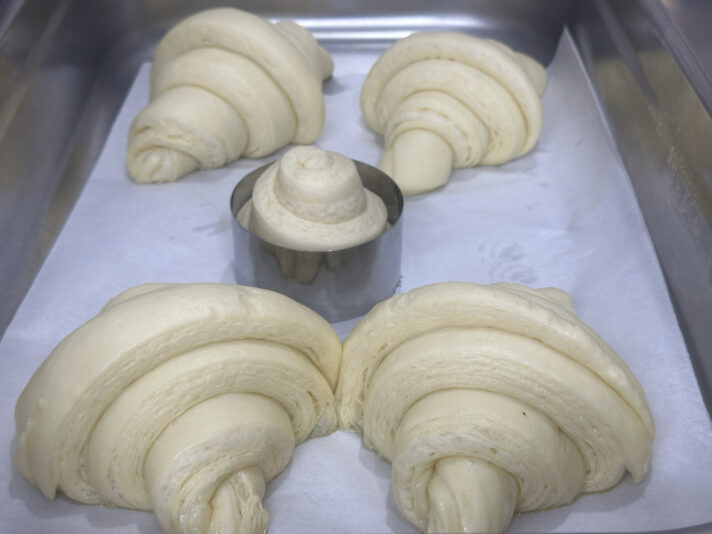Hi Pavlo.
Welcome to the Scoolinary community, and thank you for your question.
Here are some recommendations that could help you improve your croissants:
Flour and Balance of Strength (W) and PL
▪️Recommended Flour: For croissants, chefs suggest using flour with 11-12.5% protein and a strength (W) between 200-300, as these typically have a balanced PL (0.4-0.7), ensuring good elasticity for lamination.
However, if you are using flour with 13% protein, the ideal PL may vary slightly compared to flours with lower protein content (like 12%). Higher protein usually means greater elasticity and strength in the dough. Nevertheless, the recommended PL remains similar to that of a flour with 11-12.5% protein—between 0.4 and 0.7.
A PL within this range ensures the dough is elastic enough for lamination without being overly extensible or too stiff.
Oven Temperature and Baking
▪️Preheating: It is essential to preheat the oven properly before baking the croissants.
Use an oven thermometer to ensure the internal temperature is accurate (170 °C or your desired temperature). Incorrect temperatures can affect the development and baking process.
Dough Weight and Thickness
The size (38×9 cm) and weight (130 g) indicate that the dough thickness is not ideal. An ideal croissant weighs approximately 80-100 g and has a final thickness of 3 mm after lamination.
Investing in a dough sheeter can help you achieve a more uniform thickness and reduce the croissant’s excessive weight, preventing them from being flattened after baking.
Fermentation and Freezing
If you’re using fresh yeast that has been frozen for a month, check if it’s still active, as prolonged freezing can reduce its effectiveness. Test its activity with a small batch of dough.
Consider refrigerating instead of freezing the dough overnight to avoid alterations in the gluten structure.
Suggested Next Steps
▪️Ensure your flour is within the recommended PL range.
▪️ Preheat your oven properly and use an internal thermometer.
▪️ Check the condition of your fresh yeast before incorporating it into the dough.
With these adjustments, you should notice a significant improvement in the quality of your croissants.
I hope this information helps.
Best regards!


